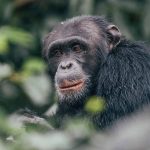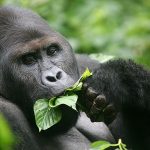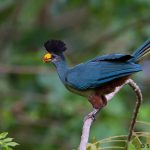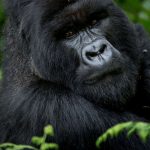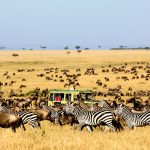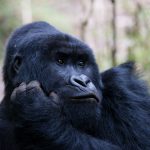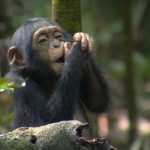“
Because of Uganda climate, it is easier for tourists to visit sanctuaries and Wildlife Reserves anytime of the year. Most of the Wildlife safaris and tours activities are done in the wildlife reserves. Wildlife Game Reserves and sanctuary in Uganda contribute highly to the tourism success.
And these include:-
- Ngamba Island in Lake Victoria:- Ngamba Island is currently home to 49 orphaned and confiscated chimps, rescued from the illegal pet and bush meat trade. Despite their initial trauma, chimps living at Ngamba have a safe and semi-natural environment in which to recover and eventually thrive over their long lives of up to 60 years.
- Ziwa Rhino Sanctuary Uganda:- Ziwa Rhino and Wildlife Ranch located in Nakasongola district is the proud home of the only wild rhinos in Uganda. The Rhino re-introduction project is a project of Rhino Fund Uganda and Uganda Wildlife Authority.
- Entebbe Wildlife Sanctuary: - Popularly known as “Entebbe Zoo", UWEC was opened in 1952, by the Colonial Government in Uganda, as a reception centre for wild animals that were found as casualties.
- Jinja Wildlife Sanctuary: - This animal sanctuary at Buwenge, is 30 kilometres (19 mi) north of Jinja on the highway to Kamuli. Buwenge is also the location of the headquarters of Jinja District, in which the city of Jinja is located.
- Kazinga Wildlife Sanctuary :- This spectacular and wonder is one of the best spot for Uganda wildlife safaris and birding tours with a variety of resident species. The Kazinga Channel Wildlife Sanctuary is a sub section of the diverse Queen Elizabeth National Park that possesses a high level of uniqueness because of the countless fauna and species of birds that characterize the shores of this western area of the park.
- Malawa Wildlife Sanctuary :- Malawa Game Sanctuary (Malawa Game Sanctuary) is a wildlife reserve (class L - Area) in Uganda
- Mount Kei Wildlife Sanctuary: - Mount Kei White Rhino Sanctuary is a wildlife reserve in Northern Uganda and has an elevation of 993 meters. Mount Kei White Rhino Sanctuary is southwest of Lodwa.
- Otze Forest Wildlife Sanctuary:- Mount Kei White Rhino Sanctuary is a wildlife reserve in Northern Uganda and has an elevation of 993 meters. Mount Kei White Rhino Sanctuary is southwest of Lodwa.
- Ntoroko-Kanara Wildlife Sanctuary:- Ntoroko-Kanara Wildlife Sanctuary as wildlife conservation area. 3. Area to be a wildlife sanctuary and a wildlife management area
- Nyabugogo Wildlife Sanctuary:-
- Kyambura Gorge: - Kyambura George pronounced by locals as ‘Chambura” is a valley of apes in the Queen Elizabeth national park in Uganda it has a river kyambura which was formed by the disorderly water s of river kyambura it’s about 100 meters deep the site of the land scape is so breath taking and one of the best u can find in the world. However only sixteen chimpanzees can be found in this valley of apes as confirmed by researchers but it’s one of the places never to live out on a trip to Queen Elizabeth national park, Kyambura George has got stunning views of the rain forest and it’s also positioned very close to the equator crossing the kyambura.
- Budongo Forest Uganda: - The Budongo Forest in Uganda is northwest of the capital city Kampala on the way to Murchison Falls National Park, semi-deciduous tropical rain forest located at the top of the Albertine Rift. It is known for an exceptionally large mahogany tree is still found here, offers an extremely rich biodiversity including 24 species of small mammals, 9 species of primates and 280 butterflies. It is also the natural habitat of more than 600 chimpanzees, of which a small community has been habituated for eco-tourism purposes.
- Uganda Wildlife Education Centre: - Popularly known as “Entebbe Zoo", UWEC was opened in 1952, by the Colonial Government in Uganda, as a reception centre for wild animals that were found as casualties.
- Semuliki Wildlife Reserve:- Toro Semliki Wildlife Reserve was established as a game reserve in 1926 and was among the first protected areas to be gazetted. The main reason was to protect the large numbers of Uganda Kobs in the area. It covers an area of 542 km2. It is located in western Uganda, within Ntoroko and Kabarole districts.
- Katonga Wildlife Reserve: - Katonga Wildlife Reserve with an area of 207 square kilometers was gazette in 1964 as a game reserve, to serve as a corridor for migrating wildlife from Western Uganda to Tanzania and Sudan. It became a Wildlife Reserve in 1996 when the former Game Department and Uganda National Parks merged to form Uganda Wildlife Authority (UWA).
- Ajai Game Reserve :- The Ajai Wildlife Reserve is a small conservation protected area in northeastern Uganda dominated by a large island surrounded by seasonally flooded swamps and wooded savanna.This Reserve is open for tourist visitation at all times of the year but the dry season (December to early March and June to October) is the best. The rainy season is in the months of April, May, October and November.
- Karuma Wildlife Reserve:- Situated in Kiryandongo district (former Masindi district) in the western side of Uganda is Karuma and stands at an elevation of 902 meters/2959.32 feet above sea level. What makes this spectacular wildlife Reserve stand out is the roaring Karuma waterfalls located on the breathtaking Victoria Nile and makes it a must see attraction on a Ugandan Safari. The fascinating waterfalls are situated not far from Murchison Falls National Park-Uganda’s largest and oldest Protected Area/National Park along the Eastern edge of the National Park and only one hour’s drive from Gulu district. This Wildlife Reserve is located within the Murchison Conservation Area that consists of the Murchison Falls National park, the Budongo Forest Reserve, the Kaniyo-Pabidi Forest and the Bugungu Wildlife Reserve.
- Matheniko Game Reserve:- On the savannah plains of the Karamoja sub-region to the North of the Mount Elgon sprawls the remote Matheniko Wildlife Reserve, the 5th of the most endangered Wildlife Conservation Protected Areas in Uganda. This exceptional Wildlife Reserve is a section of the Karamoja Protected Areas and stretches from the spectacular Kidepo Valley National Park through the Bokora Wildlife Reserve to the Pian Upe Wildlife reserve-second largest protected Area in Uganda after the Murchison Falls National Park. The North-eastern boundary of the Matheniko Wildlife Reserve lies in the Uganda-Kenya border. Located within Moroto district, Matheniko Wildlife reserve covers an area of 1520 square kilometers/590 square miles and is managed by the Uganda Wildlife Authority.
- Karuma Falls :- Karuma falls is one of the most stunning attractions for the visitors that visit Murchison falls national park. Karuma falls has a name derived from the luo local language meaning ‘Great Spirit‘. The local people believe it is the spirit that positioned the rocks on which the water hits to form the white waters of karuma falls. Karuma falls is found along the Kampala -Gulu highway at the point where the road crosses the River Nile.
- Pian Upe Wildlife Reserve:- The Plan Upe Wildlife Reserve is a conservation area in the Karamoja sub region of northeastern Uganda. It is the second largest conservation protected area in Uganda
- Bokora Corridor Wildlife Reserve:- situated in North-eastern Uganda, Bokora corridor is one of the numerous wildlife reserves found within the borders of Uganda and is part of the assortment of wildlife reserves in the great karamoja sub-region. Within the Karamoja sub-region, there are three spectacular game/wildlife reserves that form part of the enormous ecosystem mountains and Savannah plains in the semi-arid area, and they include the Pian Upe wildlife Reserve-the largest Wildlife Reserve in Uganda and the second largest protected Area in Uganda after the Murchison Falls National Park, Bokora corridor wildlife Reserve and Matheniko Wildlife Reserve.
- Aswa-Lolim Wildlife Reserve:- The Aswa-Lolim Game Reserve was a wildlife reserve in northern Uganda. It was gazzeted in 1972. The reserve was located just north of Murchison Falls National Park and provided a dispersal and migration area for ungulates including elephants
- Karenga Community Wildlife Management Area:- Karenga Community Wildlife Management Area
- Entebbe Botanic Gardens:- The Entebbe Botanical Gardens established in 1898 are situated on the northern shores of Lake Victoria virtually on the equator. Experiencing an annual rainfall of 1623 mm and at an altitude of 1134 metres the gardens are set in 40.7 hectres.
- The gardens house a collection of species of plants of the tropical, sub-tropical and temperate zones, besides several shrubs and other plants regenerated naturally over the years.The collection as of 1998 numbered 309 species, 199 indigenous to Uganda, 122 with known medicinal value and 110 exotic. The gardens are a popular attraction for visitors of which some 40,000 per year are passing through the gates since the rehabilitation in 1998.
- Kigezi Wildlife Reserve: - This nature reserve was established in 1952 and it straddles in southwestern Uganda just within Rukungiri district. Kigezi Wildlife Reserve spans up to 265 square kilometers and it is largely composed of vast plains, savannas and forests. Its wildlife species thrive within its distinct vegetation including savanna, woodland and open grassland. The notable wildlife species to find within this spectacular nature reserve include buffaloes, topis, bushbucks, Uganda kobs, waterbucks, giant forest hogs, elephants and not to forget variety of birds.This wildlife reserve inhabits huge concentration of elephants which roam from the eastern side from Rwindi plains in the Democratic Republic of Congo and the south from Queen Elizabeth National Park especially around the wet/rainy season.
- Bugungu Wildlife Reserve: - Gazzeted in 1968, Bugungu Wildlife reserve is a tinny wildlife reserve that shelters and protects the savannah grassland and temporary/seasonal wetland at the base of the Great Rift Valley escarpment to the western side of the enormous Murchison Falls National park-the oldest and largest protected Area in Uganda. Bugungu is part of the enormous Murchison Falls Conservation Area that is made up of the Murchison Falls National park-the oldest and largest National park in the whole of Uganda, the Karuma Wildlife Reserve and the Bugungu Wildlife reserve all found within North-western Uganda. Bugungu Wildlife Reserve is situated between Bulisa and Masindi district.
- East Madi Wildlife Reserve:- East-Madi Wildlife reserve can be found In Northern Western Uganda, north of Murchison Falls-Amuru District is where the. The reserve rests on 831 square kilometers of land that houses 50 mammals, 181 bird species and 374 plant species making nature walks, wildlife viewing and birding some of the activities to do while at the reserve. There are a number of primates that can be seen including the Blue Monkeys, Colobus Monkeys, Vervet Monkeys and Red-tail Monkeys
- Lomunga Wildlife Reserve:- Lomunga Game Reserve is a wildlife reserve in Northern Uganda and has an elevation of 637 meters. Lomunga Game Reserve is south of Kitirigbo.
- Mabamba Bay Wetland: - Mabamba Bay Wetland is one of the vast swamps found in Lake Victoria. It is located close to Entebbe town (40km) and Kampala city in a small village in Kasanje. The main economic activities among the communities living close to the wetland are hunting, fishing and and mining. The Mabamba Swamp is more renowned for its amazing bird collection (Over 260 species recorded). It is one of the top tourist attractions in Entebbe town. In 2006, the swamp was chosen as a Ramsar Site and wetland of international importance because of the rare and attractive bird species like the Papyrus Yellow Warbler, Shoebill Stork (Balaeniceps rex), Blue Swallow (Hirundo atrocaerulea) and Sitatunga (swamp antelope) among others.
- Lutembe Bay Wetland System:- Lutembe Bay swamp is one of the wetland systems along the shores of Lake Victoria in Uganda. Lutumbe Bay like many others is among Uganda’s 33 very important bird watching sites and gained the status of international importance in 2006 after it was designated as a Ramsar site. The bay is also important because of its high numbers of white-winged tern which estimated at about 1.5million. This is a great tourism site located along the mouth of Victoria’s Murchison Bay. This swamp forms a papyrus island along the shallow parts the lake cutting it off completely from the main Lake Victoria water body.
- Lake Bisina Wetland System:- Lake Bisina Wetland System. ... The system is also important as a refuge for fish species that have gone extinct in the main Ugandan lakes such as Lakes Victoria and Kyoga. The lake is very important for the surrounding communities in terms of fishing, transport, and supply of water for domestic use and livestock.
- Lake Mburo-Nakivali Wetland System: - Lake Mburo-Nakivali Wetland System is partly Lake Mburo National Park. A system of open and wooded savanna, seasonal and permanent wetlands, and five lakes, of which Lake Mburo is by far the largest. The system is a unique habitat, lying at the convergence of two biological zones, giving it very high biodiversity. It supports globally threatened species of birds such as the Papyrus Yellow Warbler and Shoebill, and provides refuge to 22 species of Pala arctic and Afro-tropical migrant birds during adverse conditions. It supports two of the endangered cichlid fish species which have gone extinct in the main lakes, and it is the only area in Uganda in which the Impala is found.
- Sango Bay-Musambwa Island :- Sango Bay-Musambwa-Kagera wetland system is one of the must visit sites in the country. This wetland is one of the exceptional mosaic types of wetland situated within the Lake Victoria region and is so far one of the country’s largest swamp forests characterized by vast papyrus swamp while on other parts of the system there are herbaceous swamp spotted with few palm trees. This wetland system also have grasslands that are seasonally flooded, with some of them being sandy while others are rocky in addition to having forest shores. This wetland also features three verdant rocky Islands that are found at approximately 3 kilometers away from the shores of Lake Victoria to Sango Bay.
- Kagera Wetland System (SAMUKA):- Kagera Wetland System important Bird Area. A mosaic of wetland types including the biggest tract of swamp forest in Uganda, papyrus swamps, herbaceous swamps interspersed with palms and seasonally flooded grasslands, sandy, rocky and forest shores, and three rocky islets about 3 km offshore in the Sango Bay. The area lies in the transition between the East and West African vegetation zones and this biogeographically acetone makes it biodiversity rich. The system supports huge congregations of water birds, hosting an average of 16.5% of the population of Grey-headed Gulls (Larus cirrocephalus), and hosts globally endangered mammals such as Elephant, Black and White Colobus Monkey and a subspecies of the Blue Monkey



